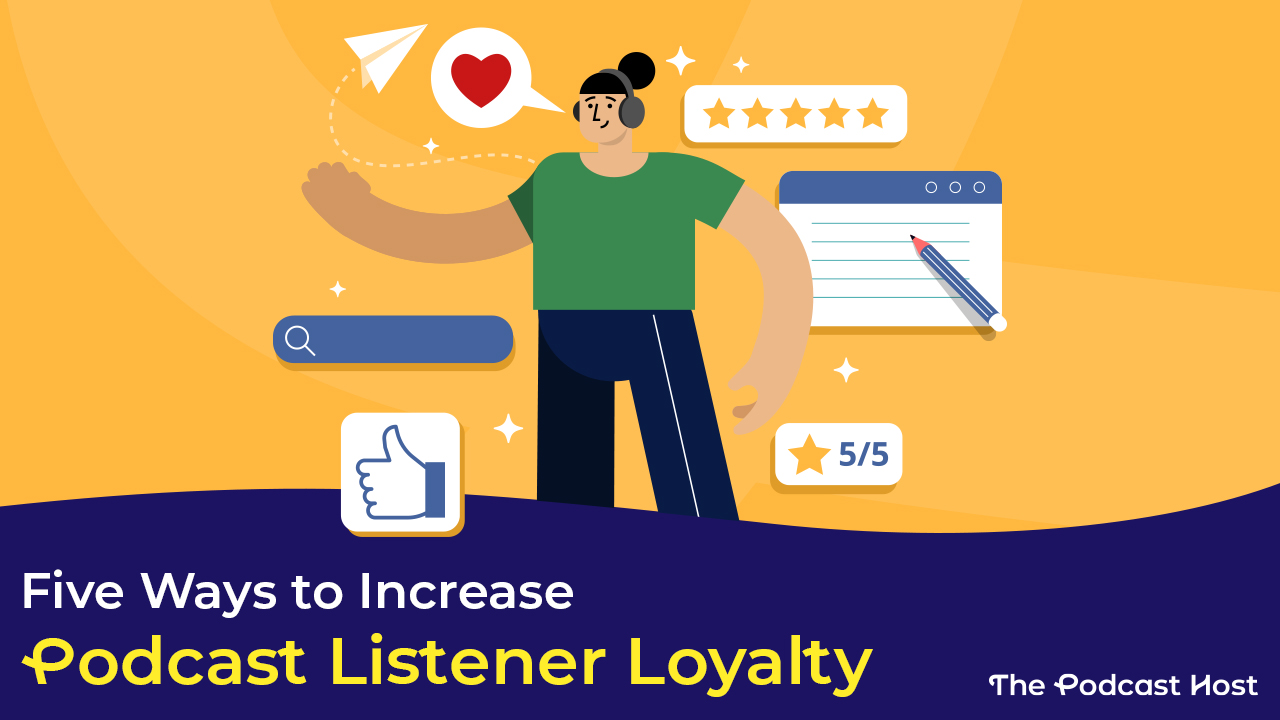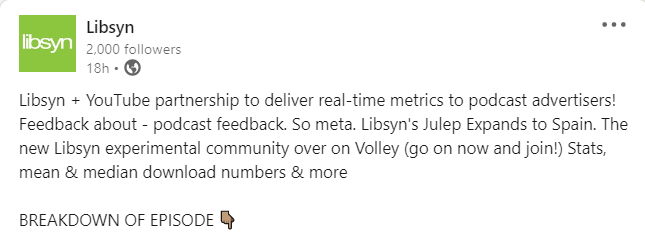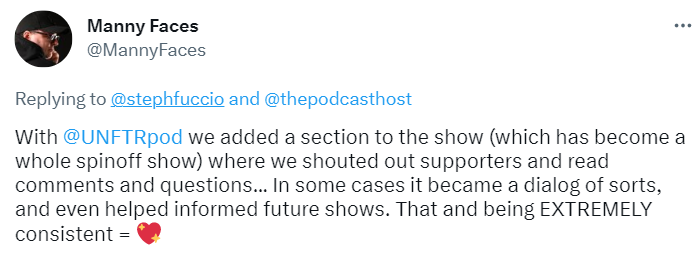Five Ways to Increase Podcast Listener Loyalty

As indy podcasters, we spend a lot of time improving our podcast. We want it to grow and reach more people. Building this trust makes your podcast appeal to potential listeners because genuine trust is contagious! Let’s look at five effective ways you can build listener loyalty.
Do You Really Need to Work at Building Listener Loyalty?
In short: Yes.
Even if a podcast is amazing, listeners still need to find it. In 2023, the most effective podcast marketing is still word of mouth. Essentially, when you talk to your listeners like community members, they’ll help you share your podcast organically. Genuine connections make the podcast world go round.

As Michelle of WP Coffee Talk mentions above, authenticity rules. Any half-genuine usage of the below methods will probably result in very little podcast growth. Think of it like this. Podcasts are the plant, and your audience/community are fertile soil. If you add healthy, nutritious soil to the plant, it will grow and thrive. That’s what you want for your podcast, right?
Five Ways to Build Listener Loyalty
There are so many effective ways to build listener loyalty. You need to take into account how much time you have to spend on this. This includes considering what platforms/tools you want to use. Also, decide what the end goal is for your community. Community can come in many different flavors. Simply speaking to social media followers is a form of community. Followers of your podcast are, in essence, a type of community also. And if you do live recordings, that’s a form of community too. Although a lively, interactive audience relationship can be rewarding for some podcasters, it’s not the only flavor of community. Do what you can keep doing and what suits your energy level, and podcast “why.”
The five methods below are listed in order of simplest to most complex. This way you can select one that’s right for your podcast and your life. And if you want to upgrade later, you’ve got a roadmap.
#1: Remind Your Listeners About Past Episodes
Podcast listeners are just as busy as you are. This means that once they listen to your newest episode, they’re likely to just wait for the next one. Unless you, the genius repurposing podcaster that you are, make it easy for them to explore your back catalogue. What can you do?
- Make a Spotify playlist of your most popular episodes and share it widely.
- Refer back to an episode or season when it comes up during a current episode,
- Create and post audiograms of previous episodes. It’s usually better to do this on a day other than your regular publication day, so listeners aren’t distracted from your new episodes. You can pick a specific day of the week and do flashback episodes every week on that day. Once you’ve reviewed the back catalogue, repeat it.
- Mention an older episode or two if it fits into a guesting episode you do. Have a list of episodes up while you’re recording, and if you think of one that fits, say the episode number or title during the recording.
#2: Highlight Them in a Social Media Post
As an avid podcast listener myself, I love it when I can engage with my favorite hosts. When they throw down a call to action (CTA), I happily will stop walking, cleaning, and working and send off a reply. And that’s exactly what happened recently when Elsie did a CTA on The Feed, Libsyn’s official podcast. She asked why podcast feedback has been harder to get lately. And I had thoughts. I sent them in via audio, and she played them on the next show, episode 236. But not only did they play my clip, but they also tagged me on all social media platforms. Here’s a shortened screenshot of their LinkedIn post.


To build listener loyalty with this method, you can write a long post like this on social media. Another method is to break the info up into many shorter posts. One of these shorter posts can be listener feedback or simply thanking specific listeners for reaching out.
#3: Invite Your Listeners to Be a Part of the Show
Some of our listeners might be quite extroverted and may enjoy being a part of your podcast. As with all added content, make sure there’s clear value for the other listeners. Having said that, there are many ways that you can include listeners.
Use CTAs to Ignite Engagement
As I mentioned above with Elsie and her CTA, asking for audio feedback on Speakpipe or like service is a great engagement tool. In your CTA, you can ask listeners if they want to be a guest or fill in co-host, record an intro or outro for the show or ask a question that you may play in an episode. For examples of this more coordinated type of listener audio input, check out Adam’s intros on Podcasting Business School.
Create a Listener Feedback Type of Episode
Manny of UNFTRpod got so much listener feedback that he ended up creating a different type of episode in his podcast for it. Also, the main show is heavily scripted, so he wasn’t able to add feedback to those episodes. There are many options on how you can include your listeners, so have fun and do what feels comfortable to you.

#4: Do a Live Podcast Recording
If you’re an adventurous podcaster, you can record your episodes live. That’s what Regina of #impact podcast does.

In fact, she recorded a live version of the show just last week for their 6th podversary. There is a bit more coordination to do a live recording. And if I’m honest, it takes time to build up the audience in the chat room. It can feel lonely and not worth it while that momentum is building. But the time you put into promoting the event and encouraging listeners to show up to the lives can be well worth it once it takes off.
#5: Create Engagement Spaces and Events
When it comes to creating places online where you can build listener loyalty, you’ve got a lot of options. In these spaces, you can ask specific content feedback questions, get to know your listeners and create a genuine community of people interested in the same topic.
For example, Matt of the WB-40 podcast tweeted that they accidentally started a group on Signal. You can test out a community space, and if it doesn’t work for you, try something else. But keep in mind these things take time to build. Allow 3-6 months for genuine growth in any sort of online community, if not longer.
Use Messaging Apps to Create a Community Space

I’ve heard of other podcasters doing the same on similar apps like Discord, Telegram, and, when I lived in China, WeChat. In fact, the most active podcast group I’m in as a listener is on WhatsApp. It’s for Ho Ho Hong Kong, a comedy podcast. Mohammed and Vivek are brilliant at managing lively group conversations. In fact, I often read comments about an episode, even if I’ve skipped listening to it. That’s community building at it’s strongest because it centers the discussions not how it’s delivered.
Hold a Monthly Virtual Meeting on Zoom
Maya of Proud Stutter has a monthly virtual meeting for your community. Maya decided not to record these meetings. Keeping them private allowed the community to speak freely without any added audience pressure. You can do this for your podcast meetings, also. Alternatively, you could choose to record them. If you record your podcast meetings, it’s important to mention this a few times. A good rule of thumb is to tell participants when they sign up for the meeting AND just before hitting record.

Format, attendee number and length of the meeting are all factors to consider when planning a community podcast meeting. Start simple and build as you go if you and the listeners want to do that. Remember, the main goal with these meetings is exactly what Maya said in the below tweet: “people love connecting.” So keep it simple and let them.
Remember to Shape Content for Your Listeners
As a final reminder, it’s important to remember that you’re building listener loyalty for YOUR podcast audience. As Andrew of The Motoring Podcast shared in the below LinkedIn reply, it’s important to shape your content with your podcast in mind.

You can take the best method for another podcast and try it out, but if it doesn’t work, move on. Stay true to your content, your host(s) and your listeners.
